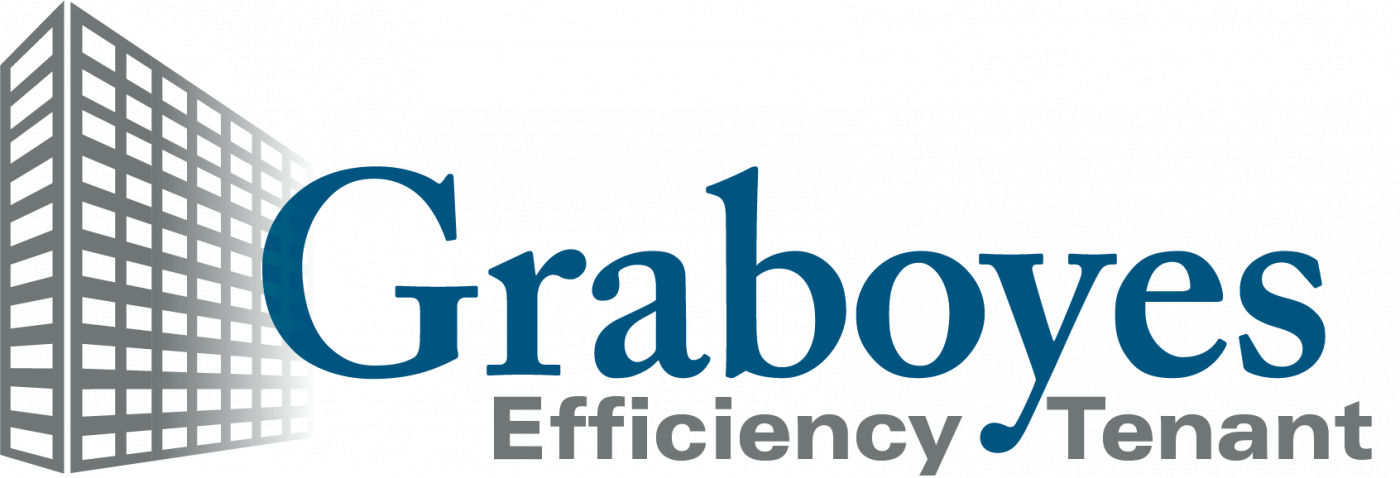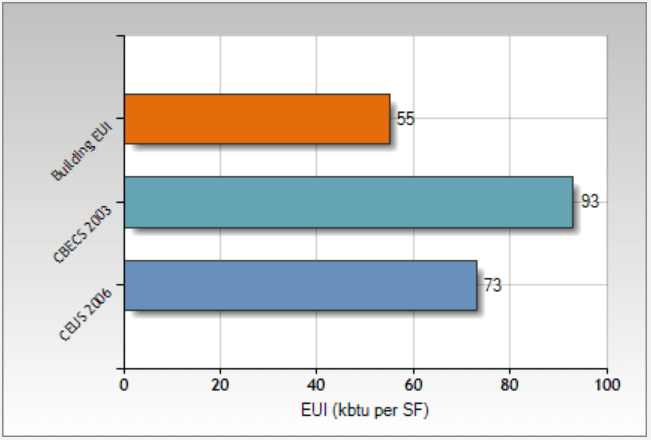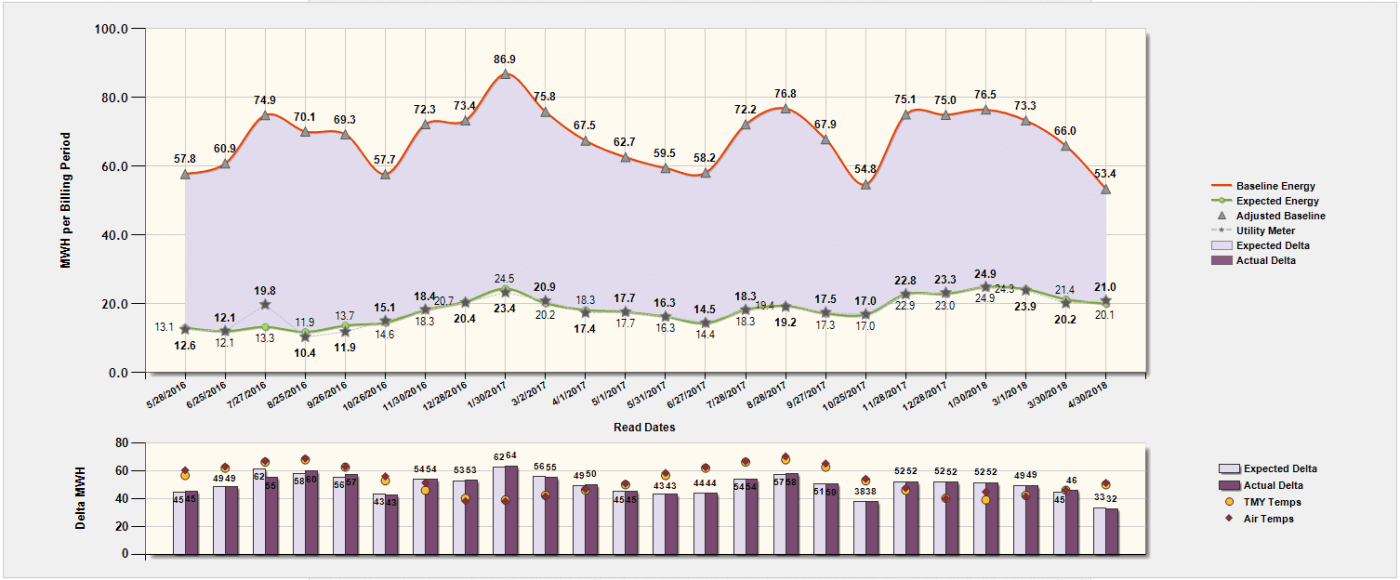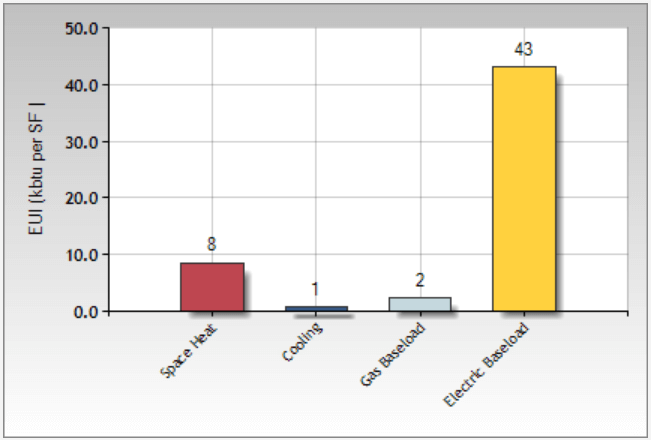This patented, cloud-based, International Performance Measurement and Verification Protocol Option D tool advances the art and science of energy auditing
At Graboyes Efficiency Tenant, we employ as part of our automated building intelligence platform several advanced energy efficiency tools including the DeltaMeter®. Developed by Portland, Oregon-based EnergyRM in collaboration with the National Renewable Energy Laboratories, the DeltaMeter® represents a significant advancement in measurement and verification (M&V) and energy auditing.
The DeltaMeter® results in more advanced, efficient, and lower-cost M&V and energy audits in buildings
The International Performance Measurement & Verification Protocol (IPMVP) has been the global standard for M&V since 1997. It is defined and managed by the Efficiency Valuation Organization, a non-profit organization whose mission is to provide products and services that help people design, implement, and invest in energy efficiency projects worldwide.
The protocol provides four different methods for confirmation of energy efficiency within a building. Option A uses periodic measurement of isolated pieces of equipment with estimated use. Option B uses direct measurement of isolated pieces of equipment’s energy use. Option C uses a whole building simulation approach that employs a statistical model with multiple variables assuming stable conditions. Finally, Option D uses a whole-building simulation approach with multiple variables while allowing for changing conditions.
The DeltaMeter® allows for more advanced and auditable assessment of energy- and demand-reduction in buildings
Prior to the development of the DeltaMeter®, it was extremely costly and time consuming to perform Option D M&V because of the computing overhead required to perform the simulation inclusive of thermodynamic conditions. With the creation of the DeltaMeter®, finally we can assess accurately the energy reduction and demand reduction over time, reduce uncertainties to transactable levels, account for routine changes to variables such as weather and seasonal or intermittent occupancy, and — perhaps most importantly — allow for future non-routine adjustments such as plug loads, occupancy, and square footage in a simple, inexpensive, and automated way. And finally, the calculations are fully transparent and auditable. In addition, the DeltaMeter® can provide guidance on identifying additional efficiency measures, can help ensure that implemented measures continue to perform over their lifetime, and can provide predictive analysis to the facilities operations and maintenance teams.
Use case 1: Remote diagnostic and audit tool
Conducting an energy audit on a building is time intensive, typically requiring hours in the field as well as many hours of analysis by engineers to determine energy efficiency measures. By uploading 12 months of utility and basic building data, the DeltaMeter® provides detailed diagnostics, by end-use, for a given building without requiring a site visit. These insights are then used by the energy auditing team to develop a list of recommended efficiency measures, significantly reducing the time required in the field and during the analysis phase.
Use case 2: Measurement and verification through metered efficiency
The DeltaMeter® will track building energy performance against an as-delivered baseline (referred to as Expected Energy), which can easily be kept up to date for actual changes to the building, its occupancy, use, or weather conditions. It supports analysis of persistence shortfalls and analysis of potential energy efficiency created by improvements to the building. For any company providing a performance guarantee, the DeltaMeter® tracks savings without the need for a separate measurement and verification audit.
To find out more, contact us at [email protected]



